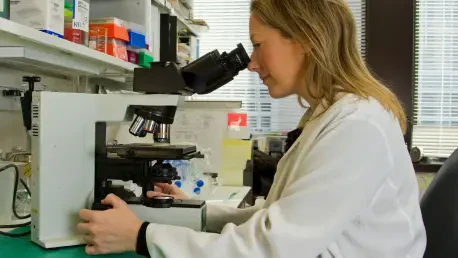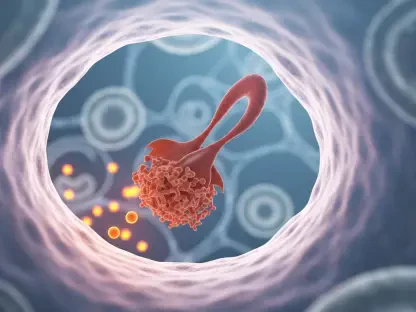In a groundbreaking move, President Donald J. Trump has issued an executive order designed to address the controversial and often risky gain-of-function research, particularly emphasizing the balance between innovation and safety. This type of research involves enhancing the pathogenicity or transmissibility of organisms and has long been a topic of concern. While it offers potential scientific advancements, it also harbors significant risks that could lead to dire public health crises. Trump’s order, formalized on May 5, 2025, is a response to these challenges, striving to protect the public while keeping the nation at the forefront of biotechnology and health research. The executive order is a concerted effort to ensure that such research does not endanger public safety but continues to evolve under stringent oversight, enhancing the capabilities of the scientific community without compromising ethical standards or security.
Addressing Research Risks and Safety
The executive order reflects an urgent need to reassess how gain-of-function research is monitored and funded, especially concerning public safety. Trump’s directive primarily targets research projects funded in foreign territories lacking adequate oversight mechanisms, highlighting instances where past administrations, such as Biden’s, supported high-risk ventures without adequate safeguards. By recalibrating these research priorities, the administration underscores a commitment to mitigate undue risks, protect citizens, and prevent potential health calamities. The executive directive marks a definitive turn away from previous policies, advocating for measures that align with rigorous safety standards and emphasizing accountability across international collaborations.
Central to this initiative is halting federal funding for projects that fail to meet U.S. oversight criteria, particularly in countries where regulatory frameworks are weak or non-existent. This approach aims not only to mitigate existing risks but also to construct barriers against future threats posed by unchecked scientific experimentation. By emphasizing domestic security standards, the executive order seeks to lay a foundation for research that prioritizes public health and aligns with national security interests. This balance is critical in ensuring that innovation continues unabated but not at unnecessary risk to national and global safety. Furthermore, the decision to redirect funds away from perilous pursuits underscores a broader governmental responsibility to enforce safe, ethical practices in scientific exploration, both within the U.S. and on a global scale.
A New Framework for Research Security
The development of a rigorous framework for research security is among the central pillars of President Trump’s executive order, intending to reshape how gain-of-function research is approached. This framework calls for a comprehensive revision of existing protocols, especially concerning dual-use research of concern, which involves biological agents that could have both beneficial and harmful applications. By setting new standards and guidelines, the executive order aims to create an environment where future research is conducted responsibly, transparently, and with ample independent oversight. Central to this new structure is the improvement of accountability mechanisms that hold researchers and institutions to the highest standards of safety and ethics.
An integral component of this strategy is the establishment of secure protocols for gain-of-function research within the United States. Recognizing that such research is not exclusive to federally funded projects, the order sets forth measures to regulate privately conducted studies as well. This includes mandatory nucleic acid synthesis screening procedures designed to prevent misuse and ensure that scientific pursuits remain aligned with societal interests. By implementing these protocols, the administration seeks to strategically position the United States to lead in global biotechnology research while concurrently safeguarding public well-being. The emphasis on independent oversight and policy reform is a direct response to historical shortcomings and illustrates a robust commitment to fostering safer and more secure research environments.
Transparency and Accountability Imperatives
President Trump’s executive order places a strong emphasis on improving transparency and accountability across all facets of gain-of-function research. This directive responds to longstanding concerns over clandestine research practices that bypass traditional oversight mechanisms. By mandating stringent reporting requirements from research institutions, the administration aims to build public trust and ensure that all endeavors align with the ethical standards expected of scientific inquiry. These measures compel institutions to disclose ongoing federally funded projects, with additional encouragement to report non-federally funded research whenever legal frameworks permit, thereby increasing public visibility and reinforcing a culture of accountability.
The order’s focus on enhancing institutional responsibilities is another critical facet of this transparency push. By insisting on rigorous reporting mechanisms, the order seeks to hold institutions accountable for maintaining compliance with outlined safety standards and transparency in their operations. Should these institutions fail to meet these measures, they risk losing federal funding and eligibility for future research grants. This strategy underscores a broader commitment to safeguarding American citizens and ensuring that research practices do not compromise public health or national security. These enhanced oversight practices serve as a safeguard against potential malpractices, creating a research ecosystem that balances innovation with responsibility across the scientific community.
Enforcement and Compliance Measures
The executive order delineates precise enforcement and compliance measures to guarantee adherence to its directives, emphasizing the importance of maintaining high standards of research safety. These measures include stipulating explicit conditions within funding agreements under which recipients are required to certify their compliance with the order’s guidelines. Institutions found in violation face serious repercussions, such as revocation of funding and disqualification from future grant opportunities. This approach reflects a shift towards a proactive oversight model, ensuring that compliance is not merely advisory but an enforced mandate with tangible consequences.
A key element of these enforcement measures is the promotion of proactive oversight, which marks a departure from the historically reactive responses to violations in research safety protocols. The Trump administration’s strategy prioritizes preventative measures, aiming to forestall potential health crises that might arise from negligent research practices. By introducing checks and balances within the research funding and oversight processes, the order establishes a framework that actively prevents breaches of compliance. This proactive stance champions a culture of accountability and thorough oversight, ensuring that research programs operate within clearly defined ethical and safety boundaries. Such proactive measures are central to maintaining public confidence in scientific practices and upholding the safety standards necessary for continued innovation in the biotechnology sector.
U.S. Leadership in Biotechnology
The executive order signifies a critical shift in addressing gain-of-function research, focusing on monitoring and funding with public safety in mind. This directive mainly targets research initiatives supported abroad that lack robust oversight, echoing concerns over previous actions by administrations like Biden’s, which endorsed risky ventures without sufficient safeguards. The recalibration of research priorities underscores an administration intent on minimizing undue risks and preventing health disasters, marking a departure from past policies. It emphasizes stringent safety measures and accountability, demanding that international partnerships adhere to rigorous standards.
A key element of this order is the cessation of federal funding for projects failing to adhere to U.S. oversight criteria, notably in countries with weak regulatory frameworks. This strategy not only seeks to reduce current dangers but also to build defenses against possible future threats stemming from unregulated scientific exploration. By prioritizing domestic security standards, the executive order intends to establish a research environment that values public health and aligns with national security interests. Ensuring innovation proceeds without posing risks to national and global safety is paramount. Moreover, redirecting funds away from hazardous pursuits highlights the government’s broader responsibility to promote safe, ethical scientific practices both domestically and internationally.









